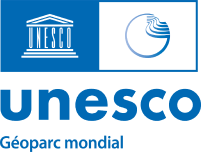

"Class'climat": actions for the future
Education is key to promoting climate action. It helps people understand and tackle the effects of the climate crisis, equipping them with the knowledge, skills, values and attitudes they need to become agents of change.
Through its environmental education and sustainable development programme, the Normandy-Maine Park and Geopark is working to make climate action a priority for young people.
"Class’climat", what is it?
This educational programme, co-designed with ESD players and educational partners, involves pupils, teachers and decision-makers in a joint project to improve the response to climate change. It provides an opportunity to study the operation of the local authority according to the chosen theme and to carry out a diagnostic study to improve the operation of a more specific site (e.g. school, land or local authority building).
It's a large-scale project that starts in September and ends with the presentation of the action plan to the elected representatives and the implementation of the first actions before the end of the school year.
The themes
The project is structured around a number of themes. It is up to the project's co-sponsors to decide which of these themes will be studied by the pupils for the diagnosis and action plan.
 |
HUMAN AND BIODIVERSITY |
The challenges:
- Reintegrating biodiversity into landscaped areas by encouraging the movement of species
- Working on our relationship with biodiversity (health, fears, etc.)
- Reposition man as a member of the ecosystem (resilience = rich ecosystem)
- Understand the impact of climate change on local flora and fauna (species distribution, adaptation, diseases, etc.).
 |
WATER RESOURCES |
The challenges:
- Preserving the quality of water resources and guaranteeing the quality of the environments and landscapes bordering wetlands: water landscape
- Adapting to the consequences of climate change (restrictions on use, sharing of resources, risk of flooding, etc.)
- Improving consumption practices (quality/quantity)
- Water is essential to health: purification, treatment, access, health risks, etc.
 |
HABITATS AND ENERGY |
The challenges:
- Using locally available resources (materials, energy)
- Reducing land artificialisation
- Adapting housing to needs (climate change, external constraints, etc.)
- Saving resources (energy, materials, green spaces, etc.)
- Integrating nature into towns and villages
 |
FOOD AND PRODUCTION |
The challenges:
- Local supply areas to promote short supply chains and food self-sufficiency
- Food, a vector for local employment and therefore for the local economy
- Healthy food that limits its environmental impact (landscape, biodiversity, water resources)
- Adapting to change: resilience of the farming system to climate change
- Reducing and recycling food waste
The conditions
→ Joint ownership of the project by teachers and elected representatives: municipalities or inter-municipal bodies are responsible for schools. Elected representatives must be involved in the project from the outset by co-signing the application form. A designated elected official will take charge of the project and report on progress to the municipal or community council. This contact person will facilitate communication and exchanges between the project teacher, technicians and local councillors. Similarly, the teacher will undertake to facilitate communication and exchanges with the educational team and the academic referent.
→ Maximum participation of one cycle 3 class and one cycle 2 class from the school is supported by the Géoparc Normandie-Maine.
→ Communication: If a cycle 2 class joins the project in implementing the actions, it is up to the cycle 3 class and their teacher to publicise the progress of their project and the dynamics involved.
Looking ahead: what next for the project?
 E3D : la labellisation « E3D » was developed by the French Ministry of Education to recognise and encourage schools and establishments committed to a comprehensive approach to sustainable development.
E3D : la labellisation « E3D » was developed by the French Ministry of Education to recognise and encourage schools and establishments committed to a comprehensive approach to sustainable development.
 Aire Terrestre Educative : an educational land area is a small area of land (urban park, wasteland, wetland, forest, river, etc.) that becomes the basis for an educational project to learn about and preserve the environment for pupils from CM1 to 3ème and their teacher. This area can also be used as a base for classes outside the school.
Aire Terrestre Educative : an educational land area is a small area of land (urban park, wasteland, wetland, forest, river, etc.) that becomes the basis for an educational project to learn about and preserve the environment for pupils from CM1 to 3ème and their teacher. This area can also be used as a base for classes outside the school.




